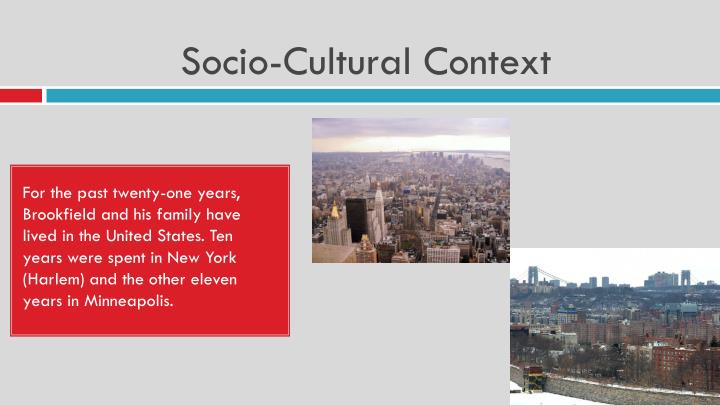

^ Jörg Dürrschmidt, Everyday Living in the Global City (2000) p.
#Socio cultural contexts skin#
^ John O'Neill, Sociology as a Skin Trade (1972) p.^ Emile Durkheim, The Elementary Forms of the Religious Life (1971) p.Hamilton ed., Emile Durkheim: Critical Assessments, Vol I (1990) p. ^ Quoted in Peter Worsley ed., The New Modern Sociology Readings (1991) p.^ Erving Goffman, Relations in Public (1972) p.Socio-spatial implications in Latin America". "Physical-social environments and aging population from environmental gerontology and geography. ^ Marjorie Taylor, Imaginary Companions (1999) p.Alfred Schütz – The four divisions of the lifeworld.Similar ideas have since been taken up in community psychiatry and family therapy. – and considered that in some instances what he termed "social surgery" to create a healthier environment could be a beneficial measure. Pierre Janet saw neurosis in part as the product of the identified patient's social environment – family, social network, work etc. Max Scheler distinguishes between milieu as an experienced value-world, and the objective social environment on which we draw to create the former, noting that the social environment can either foster or restrain our creation of a personal milieu. Phenomenologists contrast two alternative visions of society, as a deterministic constraint ( milieu) and as a nurturing shell ( ambiance). Įmile Durkheim took a wider view of the social environment ( milieu social), arguing that it contained internalized expectations and representations of social forces/social facts: "Our whole social environment seems to be filled with forces which really exist only in our own minds" – collective representations. Wright Mills contrasted the immediate milieu of jobs/family/neighborhood with the wider formations of the social structure, highlighting in particular a distinction between "the personal troubles of milieu" and the "public crises of social structure". All these man-made components are included in human cultural environment, Erving Goffman in particular emphasising the deeply social nature of the individual environment. Human settlements, roads, farmlands, dams, and many other elements have all developed through the process. In order to enrich their lives, people have used natural resources, and in the process have brought about many changes in the natural environment.

They will often think in similar styles and patterns, even though the conclusions which they reach may differ. People with the same social environment often develop a sense of social solidarity people often tend to trust and help one another, and to congregate in social groups.


 0 kommentar(er)
0 kommentar(er)
